Advertisements
Advertisements
प्रश्न
A charge of `+2.0 xx 10^-8 C` is placed on the positive plate and a charge of `-1.0 xx 10^-8 C` on the negative plate of a parallel-plate capacitor of capacitance `1.2 xx 10^-3 "uF"` . Calculate the potential difference developed between the plates.
उत्तर
The charge on the positive plate is q1 and that on the negative plate is q2.
Given :
`q_1 = 2.0 xx 10^-8 C`
`q_2 = -1.0 xx 10^-8 C`
Now ,
Net charge on the capacitor = `((q_1 - q_2))/2 = 1.5 xx 10^-8 C`
The potential difference developed between the plates is given by `q = VC`
⇒ `V = (1.5 xx 10^-8)/(1.2 xx 10^-9)` = `12.5 V`
APPEARS IN
संबंधित प्रश्न
Define 1 volt PD.
Draw a labelled diagram of Van de Graaff generator. State its working principle to show how by introducing a small charged sphere into a larger sphere, a large amount of charge can be transferred to the outer sphere. State the use of this machine and also point out its limitations.
The potential difference applied across a given resistor is altered so that the heat produced per second increases by a factor of 9. By what factor does the applied potential difference change?
In the figure shown, an ammeter A and a resistor of 4 Ω are connected to the terminals of the source. The emf of the source is 12 V having an internal resistance of 2 Ω. Calculate the voltmeter and ammeter readings.
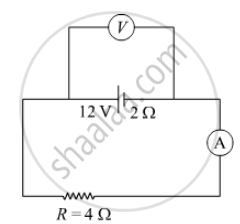
Explain the principle of a device that can build up high voltages of the order of a few million volts.
Draw a schematic diagram and explain the working of Van de Graff generator device.
Is there any restriction on the upper limit of the high voltage set up in Van de Graff generator machine? Explain.
A test charge ‘q’ is moved without acceleration from A to C along the path from A to B and then from B to C in electric field E as shown in the figure. (i) Calculate the potential difference between A and C. (ii) At which point (of the two) is the electric potential more and why?
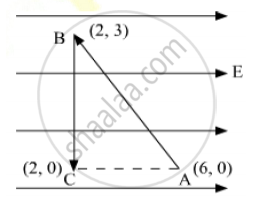
Find the potential difference `V_a - V_b` between the points a and b shown in each part of the figure.
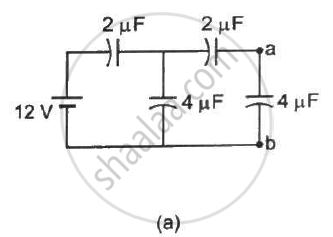
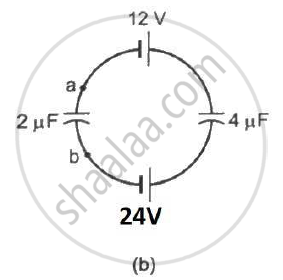
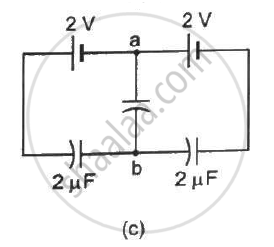
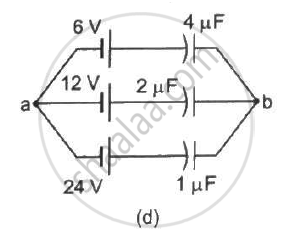
A charge of 20 µC is placed on the positive plate of an isolated parallel-plate capacitor of capacitance 10 µF. Calculate the potential difference developed between the plates.
Two capacitors of capacitance 20⋅0 pF and 50⋅0 pF are connected in series with a 6⋅00 V battery. Find (a) the potential difference across each capacitor and (b) the energy stored in each capacitor.
What will be the potential difference in the circuit when direct current is passed through the circuit?
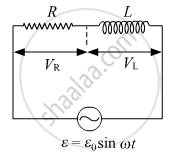
If a positive charge moves in the direction of the electric field ______.
On moving a charge of Q coulomb by X cm, W J of work is done, then the potential difference between the points is ______.
A and B are two points in an electric field. If the work done in carrying 4.0C of electric charge from A to B is 16.0 J, the potential difference between A and B is:
An α-particle and a proton are accelerate at same potential difference from rest. What will be the ratio of their final velocity?
On moving a charge of 20 C by 2 cm, 2 j of work is done then the potential difference between the point is:-
A bullet of mass of 2 g is having a charge of 2 µc. Through what potential difference must it be accelerated, starting from rest, to acquire a speed of 10 m/s.
